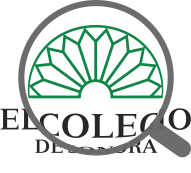| dc.contributor.author | Cramaussel, Chantal | |
| dc.coverage.spatial | MX-SON | en-US |
| dc.creator | CRAMAUSSEL, CHANTAL;#0000-0002-0075-7789 | |
| dc.date | 2012-01-01 | |
| dc.date.accessioned | 2022-06-28T19:42:31Z | |
| dc.date.available | 2022-06-28T19:42:31Z | |
| dc.date.issued | 2012-01-01 | |
| dc.identifier | https://regionysociedad.colson.edu.mx:8086/index.php/rys/article/view/161 | |
| dc.identifier | https://doi.org/10.22198/rys.2012.53.a161 | |
| dc.identifier.uri | https://regionysociedad.colson.edu.mx:8086/index.php/rys/article/view/161 | |
| dc.identifier.uri | https://doi.org/10.22198/rys.2012.53.a161 | |
| dc.identifier.uri | https://repositorio.colson.edu.mx/handle/2012/45578 | |
| dc.description.abstract | The local indigenous population and the one in northern Sinaloa, particularly along the Mayo River, was enough to provide workers for the mining districts discovered in 1683; therefore, there was no need to transfer the workforce from remote places to the region of Álamos. The population of the missions from which the Indians came decreased and their lands were invaded by the newcomers, while the population of the haciendas grew. In the haciendas, the runaway and relocated Indians soon assimilated into the castes, if only nominally. The migrations of the other social groups came mainly from the Sinaloa province to which Alamos belonged. | en-US |
| dc.description.abstract | La población india local y la asentada en el norte de Sinaloa, y en particular en el río Mayo, fue suficiente para abastecer a los reales de minas descubiertos en 1683; por tanto, no hubo necesidad de trasferir mano de obra desde lugares remotos a la región de Álamos. Mientras las misiones, de donde eran originarios los indios, se despoblaban y sus tierras eran invadidas por los recién llegados, crecía la población de las haciendas en las que poco a poco los indios huidos y de repartimiento se integraban, de nombre, a las castas. Los movimientos de población de los demás grupos sociales provenían en su mayoría de la propia provincia de Sinaloa, a la que pertenecía Álamos. | es-ES |
| dc.format | application/pdf | |
| dc.language.iso | spa | |
| dc.publisher | El Colegio de Sonora | es-ES |
| dc.relation | https://regionysociedad.colson.edu.mx:8086/index.php/rys/article/view/161/356 | |
| dc.rights | Derechos de autor 2017 Chantal Cramaussel | es-ES |
| dc.rights | https://creativecommons.org/licenses/by-nc/4.0/ | es-ES |
| dc.rights | info:eu-repo/semantics/openAccess | es-ES |
| dc.source | 2448-4849 | |
| dc.source | 1870-3925 | |
| dc.source | región y sociedad; Vol. 24 No. 53 (2012): January-April | en-US |
| dc.source | región y sociedad; Vol. 24 Núm. 53 (2012): enero-abril | es-ES |
| dc.subject | Álamos | en-US |
| dc.subject | Mining | en-US |
| dc.subject | Demography | en-US |
| dc.subject | Relocation | en-US |
| dc.subject | Mayo indians | en-US |
| dc.subject | Sonora | en-US |
| dc.subject | Álamos | es-ES |
| dc.subject | Minería | es-ES |
| dc.subject | Demografía | es-ES |
| dc.subject | Repartimiento | es-ES |
| dc.subject | Indios mayo | es-ES |
| dc.subject | Sonora | es-ES |
| dc.subject | Ciencias Sociales | |
| dc.subject.lcsh | Álamos | en-US |
| dc.subject.lcsh | Mining | en-US |
| dc.subject.lcsh | Demography | en-US |
| dc.subject.lcsh | Relocation | en-US |
| dc.subject.lcsh | Mayo indians | en-US |
| dc.subject.lcsh | Sonora | en-US |
| dc.subject.lcsh | Álamos | es-ES |
| dc.subject.lcsh | Minería | es-ES |
| dc.subject.lcsh | Demografía | es-ES |
| dc.subject.lcsh | Repartimiento | es-ES |
| dc.subject.lcsh | Indios mayo | es-ES |
| dc.subject.lcsh | Sonora | es-ES |
| dc.title | Poblar en tierras de muchos indios. La región de Álamos en los siglos XVII y XVIII | es-ES |
| dc.type | info:eu-repo/semantics/article | |
| dc.type | info:eu-repo/semantics/publishedVersion | |
| dc.audience | generalPublic | |
| dc.identificator | 5 | |










